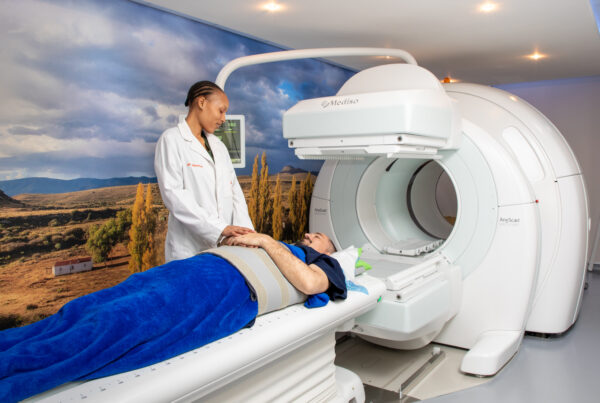Pregnancy-associated breast cancer (PABC) is defined as breast cancer that is diagnosed during pregnancy or in the first postpartum year.
What is my risk of pregnancy-associated breast cancer (PABC)?
Breast cancer is the second most common malignancy affecting pregnancy. That said, pregnancy-associated breast cancer is an extremely rare event with multiple contributing factors. It affects approximately 1 in 3000 pregnant women. It also tends to be predominantly in women aged 32 – 38 years of age. With increased rates of breast cancer and with more women delaying childbearing, it is likely that the rates of pregnancy-associated breast cancer will increase.
What are the risk factors for developing PABC?
- Genetic mutations such as the BRCA mutation. 33% of cancers in patients under the age of 20 and 22% of cancers in patients between the ages of 20-40 are related to genetic mutations (1)
- Alcohol

Photo by Anna Shvets from Pexels
- Smoking
- Prior radiation exposure
How is a PABC diagnosed?
Breast cancer in pregnancy, like most breast cancers in patients under the age of 40 years, is usually diagnosed on physical examination of a palpable mass within the breast or axilla. Because breast cancer is detected in this way it is often detected at a later stage than those that are detected by routine screening. To further complicate the matter, the diagnosis of breast cancer is often delayed due to overlapping pregnancy-induced breast changes, such as engorgement, that often make it difficult to discern a concerning breast mass from a normal breast in a pregnant woman.
How is a PABC evaluated?
To further characterise the clinically palpable mass, a breast ultrasound can be done. This will further evaluate the lesion for any suspicious features as 80% of breast masses identified during pregnancy represent benign pathology. Furthermore, if a suspicious lesion is found on ultrasound it can then be biopsied under ultrasound guidance.
A mammogram can also be done during pregnancy but the sensitivity of a mammogram in women under the age of 40 is low due to the increased parenchyma density of the young breast tissue. The patient must be counselled about radiation exposure if this route of examination is to be pursued.
As stated before. breast cancer in pregnant women is often diagnosed at a more advanced stage than screening-detected breast cancer, therefore, the patient will often require further investigation to evaluate for metastasis.
Where does breast cancer metastasise to and how do we evaluate for it?
 The most common sites for breast cancer metastases is the lung, liver, and bone.
The most common sites for breast cancer metastases is the lung, liver, and bone.
During pregnancy, lung metastasis may be evaluated using a chest X-ray which can be regarded as safe if there is adequate abdominal shielding.
Liver metastases can be evaluated using an abdominal ultrasound.
Bone metastases are usually evaluated outside the pregnancy situation with a bone scan, but due to the toxic effects of the radioactive technetium on the developing foetus an MRI is the preferred examination to look for bone metastases.
What are the treatment options in PABC?
The most important factor in planning treatment is not to delay it. If the patient is close to the delivery date then it may be appropriate to postpone treatment until after the delivery.
Termination of pregnancy in the 1st or 2nd trimester has not been shown to improve prognosis.
Surgery is the first-line treatment for operable disease and a modified radical mastectomy is the surgery of choice. The risk of surgery is from the general anaesthesia and is highest during the first trimester.
Radiation therapy is, in general, contraindicated in pregnancy, due to an increased risk of foetal malformations and associated delays in neurocognitive development. It is for this reason that most pregnant women undergo mastectomy as first-line therapy.
Chemotherapy as an additional treatment has also been shown to be beneficial in patients with high-risk breast cancer. Chemotherapy itself is contraindicated during the first trimester. This is due to its teratogenic risk during organogenesis (Teratogens are drugs, chemicals, or even infections that can cause abnormal foetal development. Organogenesis is the phase of embryonic development that starts at the end of gastrulation and continues until birth).
Methotrexate, trastuzumab, and tamoxifen are currently contraindicated in pregnancy.
Are there recommendations regarding foetal surveillance?
The recommendations suggest growth scans every four weeks (as preterm labour and Intrauterine growth restriction (IUGR) are at risk of chemotherapy during pregnancy), including a detailed anatomy scan (to assess for foetal anomalies if the foetus has been exposed to medication in the first trimester.
If IUGR is noted then more frequent evaluation and the addition of Doppler examination and amniotic fluid measurement should be considered.
When should the baby be delivered?
Delivery should occur at term or as close to term as possible. Induction of labour is only indicated to provide treatment to the mother that is contraindicated during pregnancy.

photoagent/shutterstock
There is also no risk of metastases of breast cancer to the foetus as the cancer cells cannot cross the placental barrier.
Can I breastfeed?
Lactation and breastfeeding are not contraindicated UNLESS the patient is receiving chemotherapy or radiation therapy. In this case, the breast milk will contain the administered agent.
References
Keyser, E. A., Staat, B. C., Fausett, M. B., & Shields, A. D. (2012). Pregnancy-associated breast cancer. Reviews in obstetrics & gynecology, 5(2), 94–99.




![women [longevity live]](https://longevitylive.com/wp-content/uploads/2020/01/photo-of-women-walking-down-the-street-1116984-100x100.jpg)










